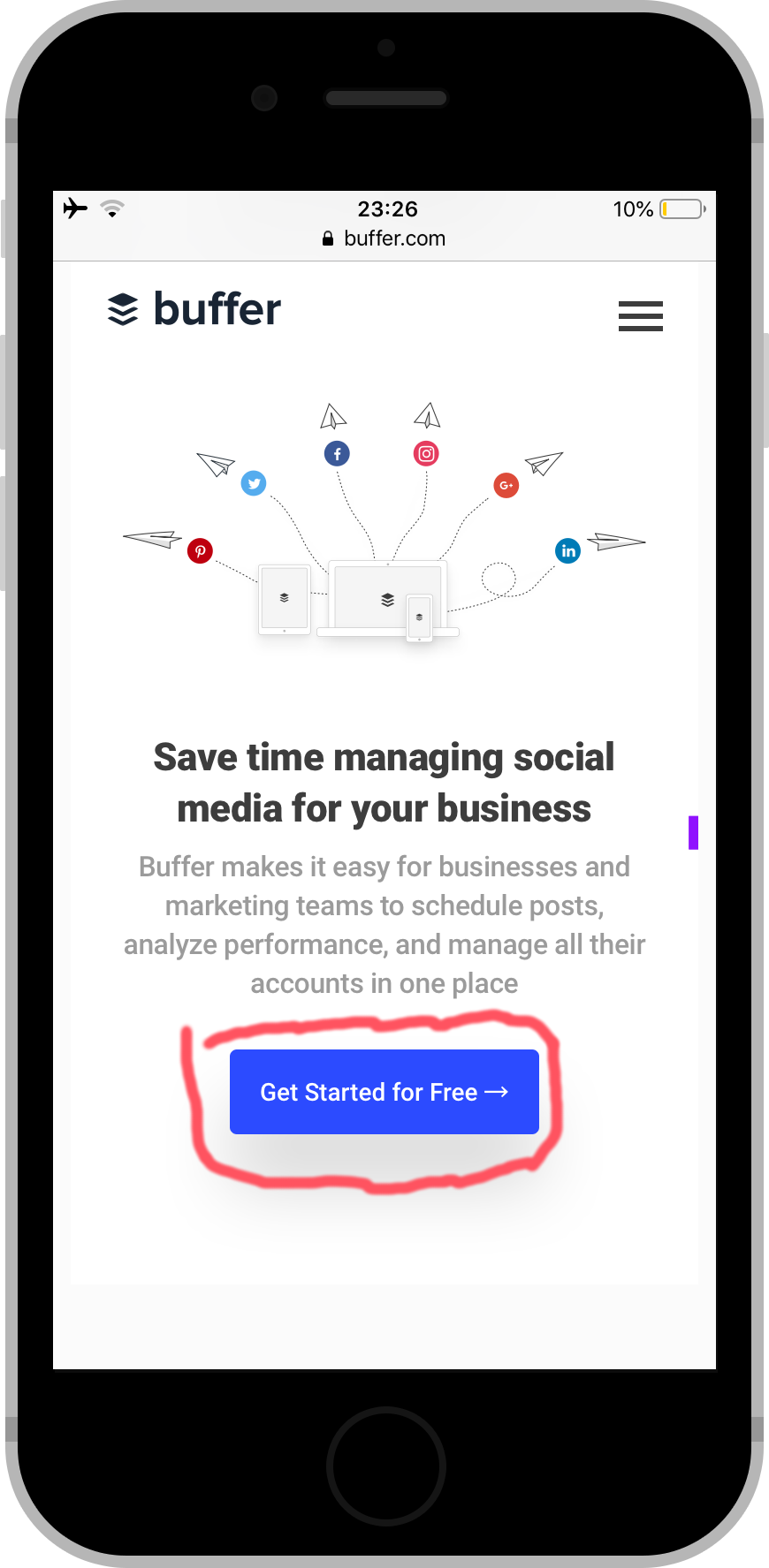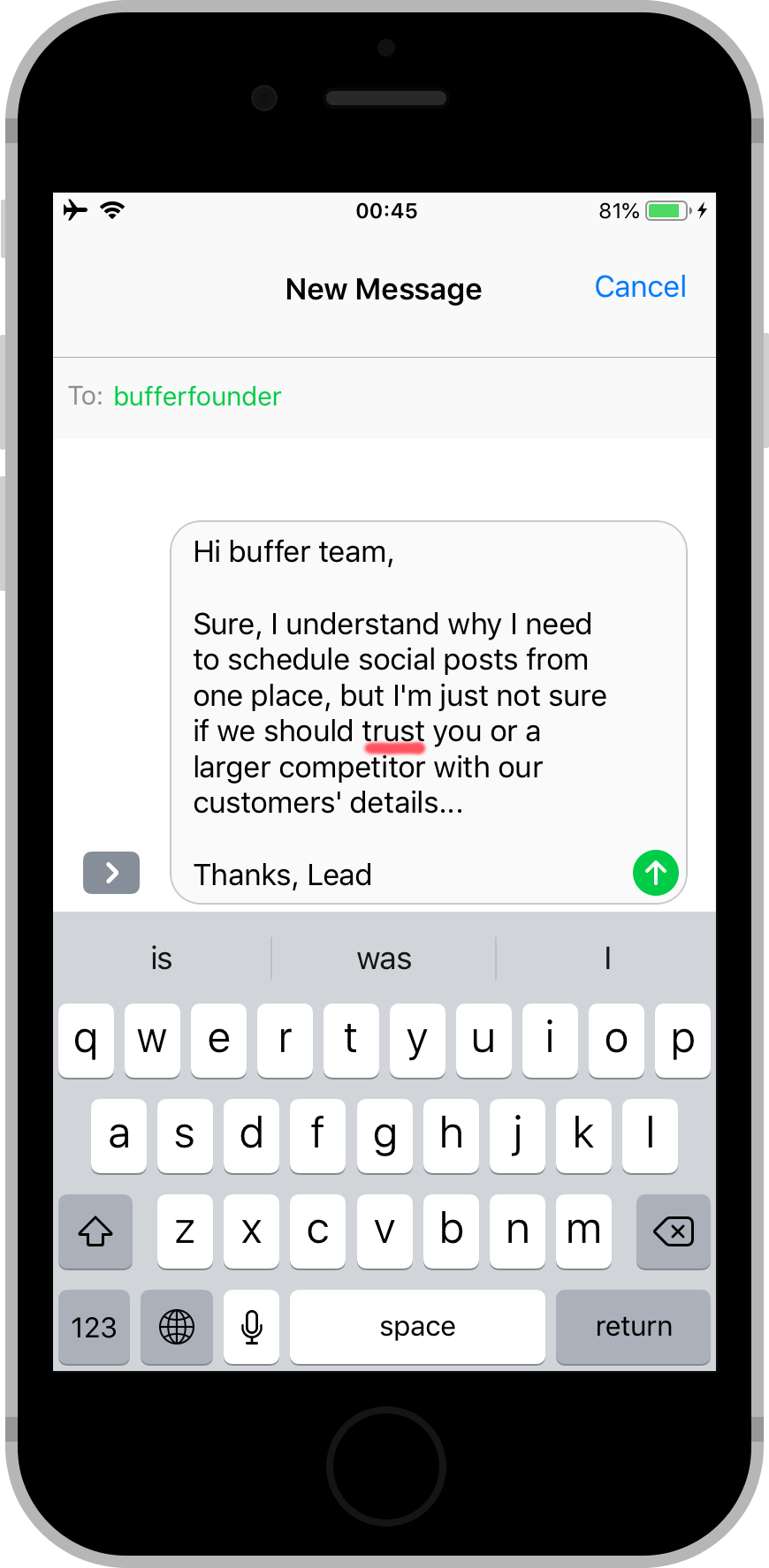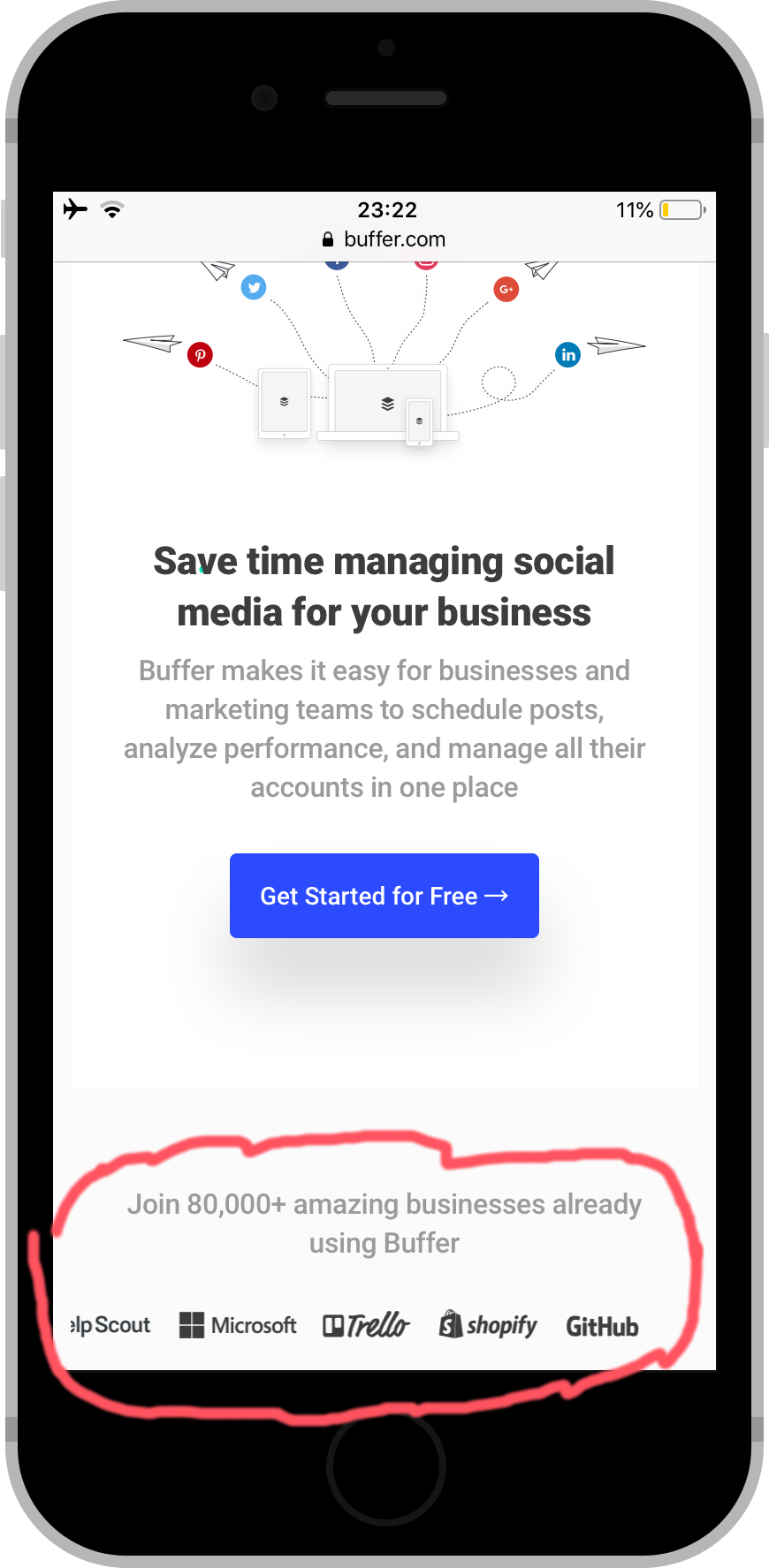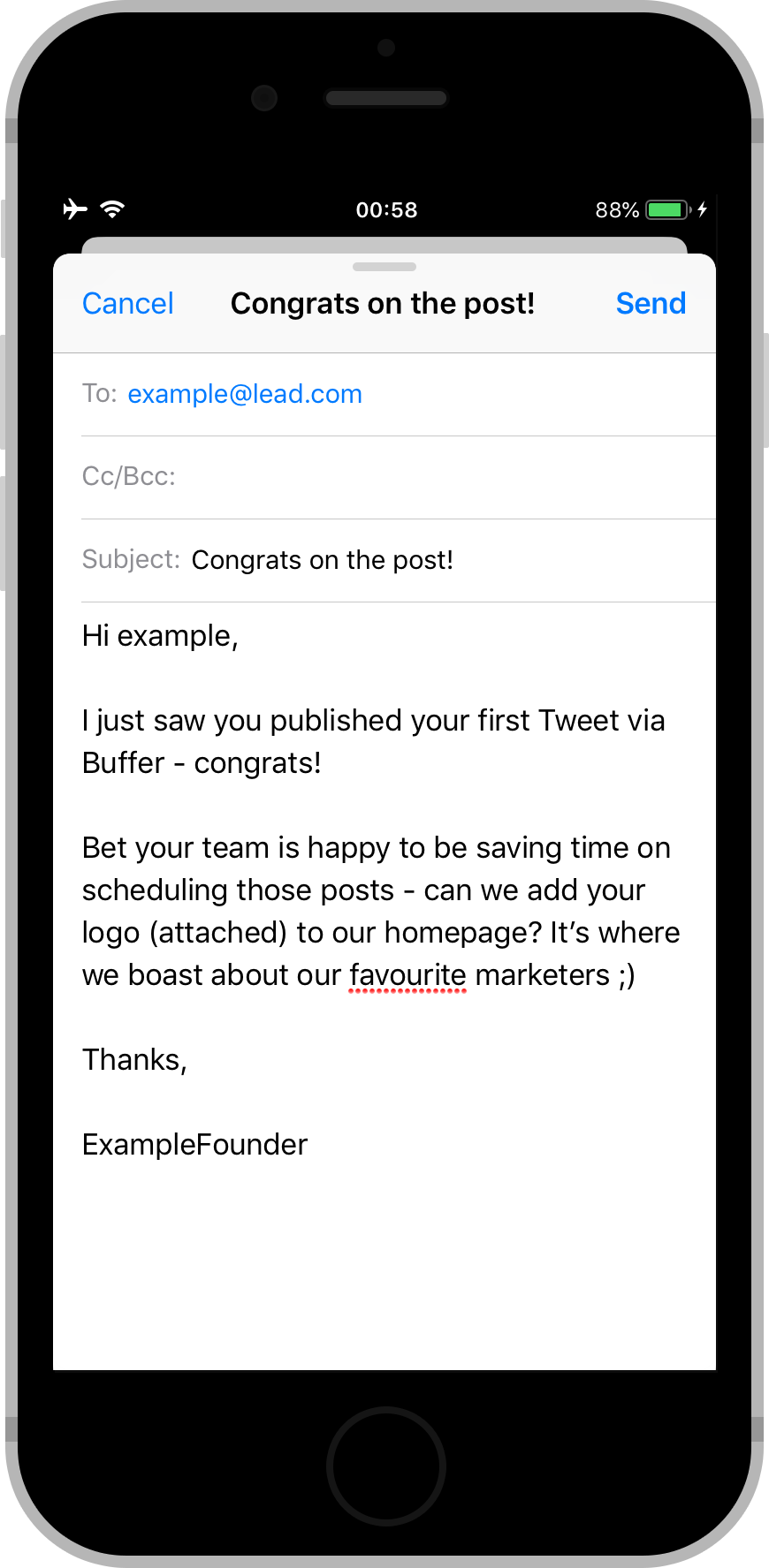Social Proof Cheat-Sheet
Learn how to get your first customers and grow faster by using social proof, even if you're hopeless at marketing.

Learn how to get your first customers and grow faster by using social proof, even if you're hopeless at marketing.

So you have a new product. And you just know your target audience will love it if they give it a chance.
Your landing page content is on point - it explains exactly why your product is so awesome.
But guess what...
You’re unproven. And customers can smell that a mile away.
Without some social proof, your audience won't trust you, believe you, or buy your product.
Let’s change that now.
In the next 5 minutes, I'll show you how to:
Louis's advice is spot on, concrete and actionable. He helped boost my sales and saved me countless hours.
Well, why wouldn’t you trust a stranger on the internet?
That aside, I’ve founded and sold two startups, been a VP of growth/partnerships at a startup which raised $15m, and helped 30+ companies boost conversions by 2-10% with social proof.
I want you to use this guide and grow, so you end up needing my course on social proof optimisation.
Ideally, you’ll use that to grow even more, to the point where you need to pay me a lot of money as a consultant to sort out your social proof for you!
So don’t worry, we’re pulling in the same direction ;)
If there’s one thing I know about being a pirate, it’s that men look good with tattoos and eyeliner you can’t stop your ship from sinking unless you first find out where there's a leak.
That’s true for your marketing funnel too.
Before you start working on your testimonials and other social proof, you need to find out where your potential customers (in marketing, we call them 'leads' ) are dropping off.
And so we come to the first big question…
Which action do you want leads to take that they aren’t taking?
Are they not clicking the "sign-up" button, for example?
Or are they maybe going through the sign-up process without a problem, but then dropping out instead of inputting their payment details?
If you want to fix the leak, you need to pinpoint where it is first.

So now we know (from step 1) where your leads are dropping off.
But why?
To find that out, you need to talk to your leads and read between the lines. The good news is that you should be talking to prospective customers to improve your product anyway, so it isn't any extra work...
Right?
Here are the most likely objections:
Unfortunately, the only way to work out which one is your problem is to put in some work and talk to your potential customers. It’s pretty easy to get them to admit to the first two objections.
If they don’t, you can normally assume the third objection is the most important one (but they’re too polite to say so).

Awesome - now you not only know which important action your leads aren't taking, but also why they aren't ready to take it.
The next step is to put together some social proof to handle their objection and make them happy to take that action.
There are three basic components to putting together some social proof which will do that successfully:
There are lots of options here and, if you’re just starting out, you honestly don’t need to know all of them. I suggest you stick to the following:
The Source:
If you have customers or users already, or know a potential user who’d be willing to give you a testimonial/rating, use them as the source.
This is called a ‘look-alike’ source (ie the lead identifies with the person/brand giving the social proof, as they are similar in some way).
Otherwise, go for what’s called a ‘personal’ source (basically putting you/your team personally front and center, to establish a relationship and build trust/confidence).:
The Format:
Again, there are lots of factors to consider here but, as with most things in life, you can get 80% of the results with 20% of the effort.
As a simple rule of thumb, you need to think about what the objection is and what kind of social proof will most likely make that objection go away.
If the lead doesn’t understand the value, for example, a testimonial explaining how amazing the product is will handle that objection. A rating or a logo on the other hand, probably won’t help much.
Because your product is pretty new, there are unfortunately some formats of social proof which aren’t available to you. If you only have three customers, for example, you can’t make people trust you by saying “300+ customers like you use this product already.”
The Content:
This should directly address the objection. There’s no point leaving it up to the source of social proof (normally your customers) to write it themselves, because:
a) If they say the wrong thing it will be useless at best
b) They’re more likely to reply/help if you do the work for them and just give them something to approve
Make sure the content of your social proof (eg a testimonial) is beneficial to the actual person (not just the company) you are sourcing it from.
That way, they’ll be much more likely to approve it and even share it with other potential customers. Nice - free marketing and easy customer retention!

There’s a term in marketing called the magic moment. This is the first time a new customer gets really excited by the value of your product.
Normally it’s triggered by something awesome happening.
For example the magic moment of a Tesla might be the first time you put your foot down to feel the awesome acceleration.
The best time to ask for a testimonial/rating/social proof from a customer is right after they experience that magic moment.
When they are super excited by your product.
It doesn’t matter if you reach out directly in your app, by email, or by phone. Do whichever you think the customer would be more comfortable with.
If you can’t wait for that to happen, the second best time to ask is right after they convert to being a customer or user.
That might seem a bit weird (after all, they haven’t used the product yet so how can they endorse it), but it’s easy to phrase the content in a way that implies results but demonstrates intent.
Obviously this is just a workaround you would use as a new company after launching. When you have a few customers, you’ll be much more successful if you wait for the magic moments instead.
Oh - and if you don’t get a reply, it doesn't end there. Follow up. Often.
Finally, remember to make it as easy as possible for the customer. Ideally, all you ask them for is a simple click or a ‘yes/no’ email reply.
Worried about the customer not being sure if they’re allowed to give you permission to use them as social proof? Include it as part of your terms and conditions. Something like:
“We commit to publishing a mutually beneficial press-release of our cooperation within 20 business days, to be shared freely by both parties.”
Of course that won’t force them to agree, but it does mean they don’t have to go back to their boss and ask again (which will probably never happen).

As a new company, your marketing and landing page should constantly be improving and changing as you learn more about your customers.
Build the social proof into your site in a spot where it makes sense - near the CTA you're trying to get the lead to take.
In an ideal world (or with more revenue) you’d test several formats and contents of social proof against each other. You’d also want to personalise the social proof to the lead.
But at your stage, that’s overkill at best. And probably not even possible. Come back to it when you get past $5k MRR.
For now, monitor the numbers and trust your gut (and your customers) to tell you if something's wrong.

Depending on your product, customers and the complexity of your sales process/marketing funnel, you should follow these steps more than once at different points in your marketing funnel. Ideally, for each objection you need to handle.
Will it work?
Well, as an early stage company you should see a >10% improvement in conversion after just a few hours work implementing the steps above.
Assuming your product is actually viable, good social proof is the kind of thing that can help you get those first 50 customers on board.
For some free examples of social proof done right, check out the Social Proof Gallery.
If you're already generating some revenue and want to learn to increase your sales even more with social proof (including interviews, examples and discounts on tools), take a look at the Social Proof Handbook.
Finally, I'd love to hear your questions, feedback and success stories. Hit me up via email or @louisnicholls_ on Twitter. Good luck!
LAUNCHING 17/02/19
© Louis Nicholls 2019. All rights reserved